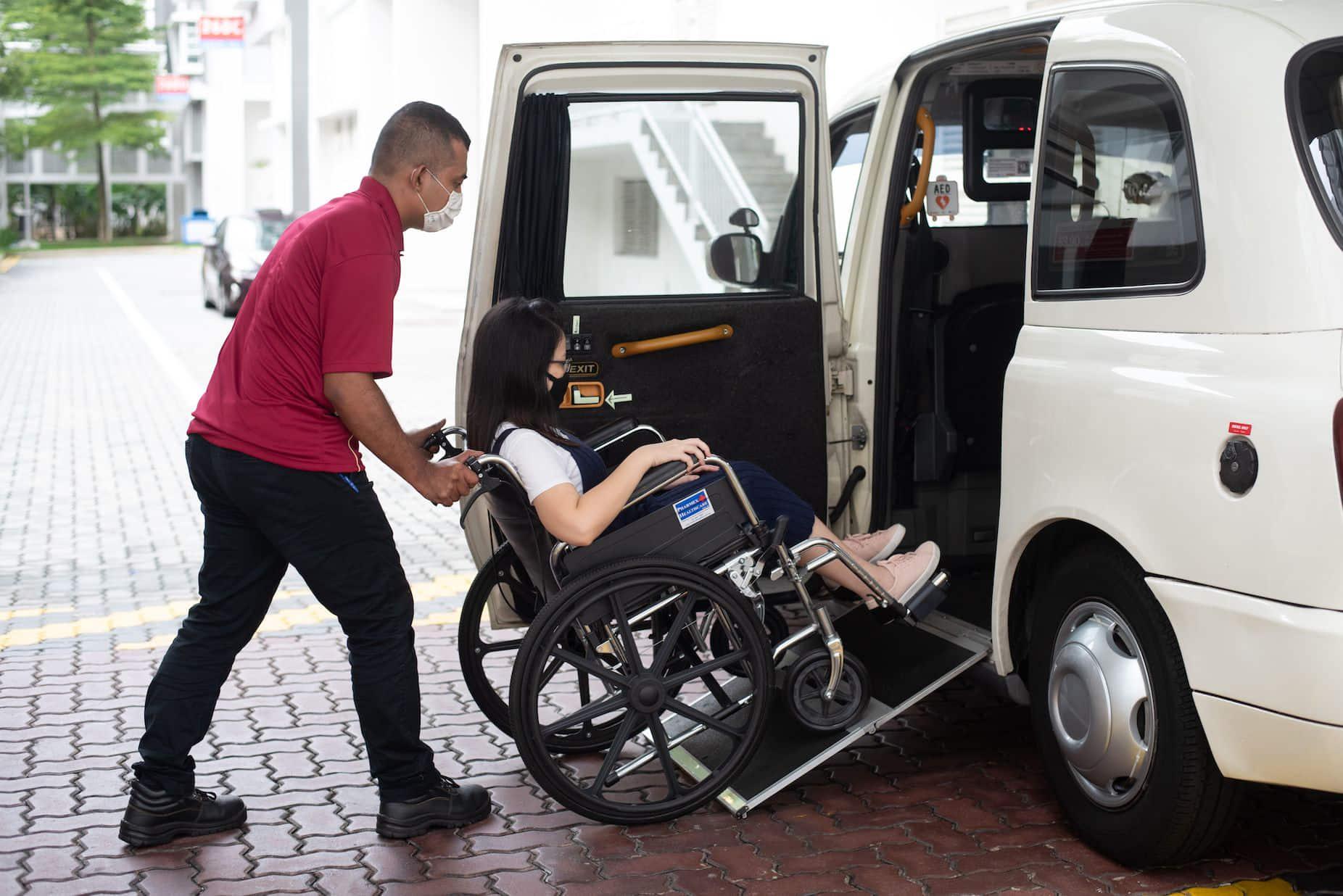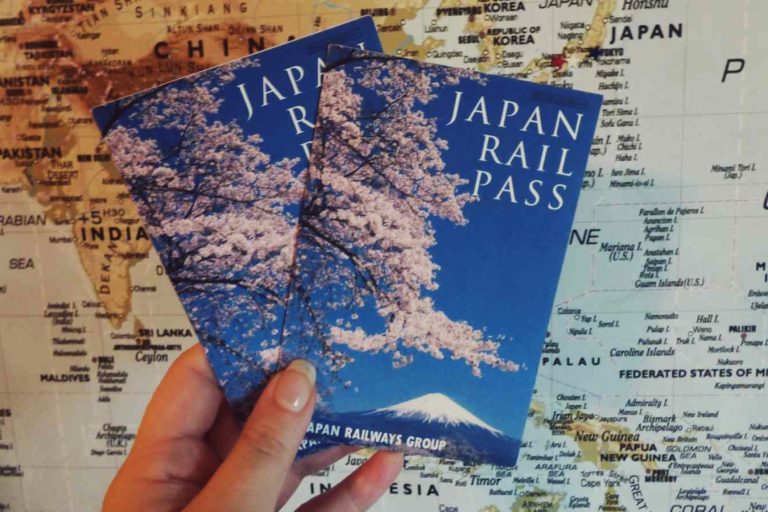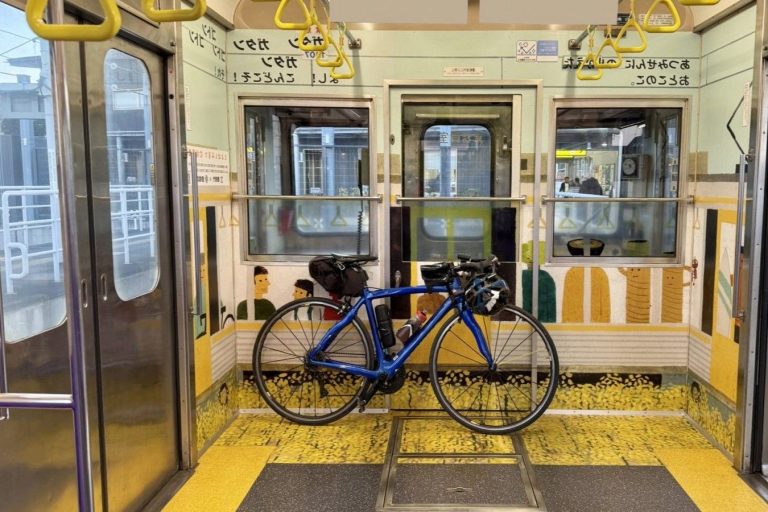Overview of Accessibility & Wheelchair Services
Traveling with mobility challenges doesn’t mean compromising on adventure or comfort. Anchorage, Alaska, has made significant strides in creating an inclusive environment where everyone can experience the beauty and excitement of the Last Frontier. From comprehensive transportation systems to thoughtfully designed accommodations, the city offers a range of accessibility services that cater to diverse needs.
The foundation of accessible travel lies in understanding what services are available and how to access them effectively. Whether you’re planning a winter adventure to see the Northern Lights or exploring the rich cultural offerings of Alaska’s largest city, knowing your options can transform your travel experience from stressful to seamless.
Importance of Accessibility in Travel
Accessible travel services aren’t just about compliance with regulations; they represent a commitment to ensuring every person can participate fully in travel experiences. When transportation, accommodations, and attractions are designed with accessibility in mind, they create opportunities for independence and dignity. This approach benefits not only individuals with permanent disabilities but also those with temporary mobility limitations, elderly travelers, and families with young children in strollers.
Types of Wheelchair Services Available
Anchorage offers various wheelchair services across different sectors. Public transportation features fully accessible buses with ramps, kneeling capabilities, and priority seating areas. Airlines serving Ted Stevens Anchorage International Airport provide comprehensive wheelchair assistance, from check-in to boarding and deplaning. Many local attractions, restaurants, and hotels have invested in accessibility features like wheelchair-accessible entrances, bathrooms, and designated seating areas.
How to Access Services Effectively
Successful access to wheelchair services often requires advance planning and clear communication. When booking flights, hotels, or tours, specify your accessibility needs early in the process. Keep documentation of your requirements and confirm arrangements before your departure date. Many service providers offer dedicated accessibility coordinators who can help customize your experience and address specific concerns.
Public Transportation Accessibility
Anchorage’s public transportation system has evolved to become a model of accessibility, ensuring that mobility challenges don’t limit your ability to explore the city. The comprehensive approach to accessible transit reflects the community’s commitment to inclusive transportation options.
The integration of accessible features into the public transit system means that wheelchair users and individuals with other mobility needs can navigate Anchorage with confidence. From the downtown core to residential neighborhoods, accessible transportation connects you to employment, healthcare, shopping, and recreational opportunities throughout the city.
Overview of Anchorage’s People Mover System
The People Mover system serves as Anchorage’s primary public transportation network, operating routes that connect major destinations across the municipality. All buses in the fleet are fully accessible, featuring low floors and advanced accessibility technology. The system operates year-round, maintaining service even during Alaska’s challenging winter conditions. Routes cover essential destinations including the airport, major shopping centers, healthcare facilities, and employment hubs.
Features of Accessible Buses
Every People Mover bus includes multiple accessibility features designed to accommodate various mobility needs. The kneeling function lowers the bus for easier boarding, while deployable ramps provide smooth access for wheelchair users and those using mobility devices. Audio and visual stop announcements help passengers with hearing or vision impairments navigate the system. Priority seating areas near the front of each bus accommodate wheelchairs and provide easy access for passengers with mobility challenges.
Paratransit Services and Eligibility
AnchorRIDES provides complementary paratransit services for individuals who cannot use the fixed-route bus system due to their disability. This door-to-door service operates within the same hours and service area as the regular bus system. Eligibility requires an application process that evaluates your ability to use regular transit services. The service offers advance reservations and provides transportation for essential trips including medical appointments, employment, and daily living activities.
Air Travel Accessibility
Flying to or from Anchorage with mobility needs requires understanding both airline policies and airport facilities. Ted Stevens Anchorage International Airport serves as a major hub for both domestic and international travel, with comprehensive accessibility services that make air travel more manageable for passengers with disabilities.
Airlines serving Anchorage have developed sophisticated systems for assisting passengers with mobility challenges. These services extend from the moment you book your ticket through your arrival at your destination, ensuring continuity of care throughout your journey.
Booking Assistance for Passengers with Disabilities
When booking flights, airlines recommend notifying them of your accessibility needs at least 48 hours before departure. This advance notice allows them to arrange appropriate assistance and equipment. Airlines can provide wheelchairs for airport navigation, assistance with boarding and deplaning, and help with connecting flights. Some carriers offer specialized booking services with trained representatives who understand accessibility requirements and can help coordinate your entire travel experience.
Wheelchair Services on Flights
Airlines provide different types of wheelchairs depending on your needs and the areas where assistance is required. Aisle chairs allow transfer to and from your seat on the aircraft, while standard wheelchairs help with airport navigation. Your personal wheelchair can be checked as priority baggage and will be returned to you at your destination. Flight attendants receive training on assisting passengers with disabilities, and aircraft are equipped with onboard wheelchairs for use during flight when necessary.
Airport Accessibility Features
Ted Stevens Anchorage International Airport offers comprehensive accessibility features throughout its terminals. Accessible parking spaces are located close to terminal entrances, and shuttle services connect remote parking areas. Inside the terminals, you’ll find accessible restrooms, elevators to all levels, and TTY phones for hearing-impaired passengers. The airport provides courtesy wheelchairs and has trained personnel available to assist with navigation, baggage, and boarding procedures.
Winter Activities Accessibility
Anchorage’s winter landscape offers incredible opportunities for outdoor recreation, and many of these experiences have been adapted to accommodate individuals with mobility challenges. The city’s commitment to inclusive recreation means that winter activities aren’t limited by physical abilities.
From adaptive skiing programs to accessible viewing areas for the Northern Lights, Anchorage has developed creative solutions that allow everyone to participate in Alaska’s signature winter experiences. These programs often provide specialized equipment and trained instructors who understand how to modify activities for different ability levels.
Accessible Winter Sports in Anchorage
Several local organizations offer adaptive winter sports programs that cater to individuals with disabilities. Adaptive skiing and snowboarding programs provide specialized equipment like sit-skis and outriggers, along with trained instructors who can teach techniques adapted for different abilities. Some facilities offer accessible warming huts and modified lift systems. Cross-country skiing trails in city parks include accessible routes with packed surfaces suitable for wheelchairs equipped with ski attachments.
Events for Individuals with Reduced Mobility
Major winter events in Anchorage, including the Iditarod Sled Dog Race and Fur Rondy festival, have incorporated accessibility features to ensure broad participation. Viewing areas for parades and races include accessible seating and clear sight lines. Indoor venues hosting winter festivals provide accessible entrances, restrooms, and seating arrangements. Many events offer priority parking for vehicles displaying disability placards and have volunteers trained to assist visitors with mobility needs.
Planning Accessible Winter Adventures
Successful winter adventure planning involves researching accessibility features of specific activities and locations. Contact tour operators in advance to discuss your needs and available accommodations. Consider weather-related factors that might affect accessibility, such as ice conditions or snow depth. Pack appropriate clothing and equipment, keeping in mind that winter conditions may require additional time for transfers and movement between locations.
Dining and Accommodation Accessibility
Finding suitable accommodations and dining options is crucial for a comfortable stay in Anchorage. The city’s hospitality industry has made significant investments in accessibility features, though the level of accommodation can vary between establishments.
Many hotels and restaurants have gone beyond basic compliance to create genuinely welcoming environments for guests with mobility challenges. This includes not just physical accessibility but also staff training and service adaptations that enhance the overall experience.
Finding Accessible Hotels and Resorts
Anchorage offers numerous hotels with accessible rooms featuring roll-in showers, grab bars, lowered countertops, and wide doorways. Many properties provide accessible parking spaces close to entrances and have elevators serving all floors. When booking, specify your exact needs, as accessible room configurations can vary significantly. Some hotels offer additional services like accessible shuttle transportation and can arrange for equipment rentals such as shower chairs or raised toilet seats.
Dining Options for Wheelchair Users
Restaurants throughout Anchorage have improved their accessibility features, with many offering step-free entrances, accessible restrooms, and tables that accommodate wheelchairs. Downtown establishments and those in newer shopping centers typically have the most comprehensive accessibility features. When making reservations, mention any specific seating requirements or accessibility needs. Many restaurants can modify their seating arrangements to better accommodate wheelchairs and mobility devices.
Vacation Rentals with Accessibility Features
Vacation rental properties offer an alternative accommodation option, with some specifically designed or modified for accessibility. These properties may feature ramps, wide doorways, accessible bathrooms, and modified kitchens. When searching for vacation rentals, use filters for accessibility features and communicate directly with property owners about your specific needs. Some rental companies specialize in accessible properties and can provide detailed information about modifications and available equipment.
Cultural and Entertainment Accessibility
Anchorage’s cultural scene offers rich opportunities for entertainment and education, with many venues having invested in accessibility improvements. Museums, theaters, and cultural centers have developed programs and features that ensure visitors with mobility challenges can fully participate in cultural experiences.
The city’s commitment to cultural accessibility extends beyond physical modifications to include program adaptations and specialized services that enhance the experience for visitors with various disabilities.
Museums and Arts Accessibility
Major museums in Anchorage, including the Anchorage Museum and Alaska Native Heritage Center, feature comprehensive accessibility amenities. These include wheelchair-accessible entrances, elevators to all exhibit levels, accessible restrooms, and designated parking. Many museums offer tactile exhibits, audio descriptions, and large-print materials. Staff members receive training on assisting visitors with disabilities, and some institutions provide wheelchairs for visitor use.
Festivals and Events for All Abilities
Anchorage’s festival calendar includes numerous events that prioritize accessibility. The Anchorage International Film Festival, summer music festivals, and cultural celebrations incorporate accessible seating, sign language interpreters when requested, and accessible vendor areas. Event organizers often work with disability advocacy groups to identify and address potential barriers. Many outdoor events provide accessible portable restrooms and designated accessible parking areas.
Accessible Sightseeing Options
Popular sightseeing destinations around Anchorage have developed accessibility features that allow visitors with mobility challenges to enjoy Alaska’s natural beauty. The Tony Knowles Coastal Trail includes paved, accessible sections with scenic viewpoints. Some tour companies offer accessible vehicles and modified itineraries that accommodate wheelchairs and mobility devices. Viewing areas for wildlife and scenic vistas often include accessible platforms and parking areas.
Travel Planning Resources
Effective travel planning becomes even more important when accessibility needs are involved. Anchorage offers various resources and tools that can help you plan a successful and enjoyable visit, regardless of your mobility requirements.
Understanding how to use available planning resources can significantly improve your travel experience. From understanding bus timetables to accessing real-time information about service disruptions, these tools help you maintain independence and confidence while navigating the city.
Using Timetables for Accessible Travel
Public transit timetables provide essential information for planning accessible travel throughout Anchorage. The People Mover system publishes detailed schedules that include information about accessible bus stops and transfer points. When planning your trips, allow extra time for boarding and disembarking, especially during winter weather conditions. Mobile apps and online resources provide real-time bus tracking information that can help you minimize wait times at bus stops.
Effective Route Planning Tips
Successful route planning involves more than just finding the shortest path between destinations. Consider factors like sidewalk conditions, accessible entrances to buildings, and available parking when planning your routes. Use online mapping tools that include accessibility information and street-level imagery to preview your planned routes. During winter months, factor in additional time for snow and ice conditions that might affect accessibility.
Understanding Transit Schedules
Transit schedules in Anchorage account for seasonal variations and special events that might affect service. Winter schedules may include adjusted timing due to weather conditions, while summer schedules often feature extended hours for tourist season. Understanding peak hours, holidays, and event schedules helps you plan trips during less crowded times when boarding and navigating transit systems may be easier. AnchorRIDES paratransit service operates on advance reservation systems that require understanding booking procedures and scheduling requirements.
Safety and Emergency Procedures
Safety considerations take on additional importance when traveling with mobility challenges. Understanding emergency procedures and safety features can provide peace of mind and help you respond effectively to unexpected situations.
Anchorage’s transportation systems and public facilities have developed comprehensive safety protocols that address the specific needs of individuals with disabilities. These procedures ensure that safety measures are inclusive and account for different evacuation and emergency response needs.
Emergency Protocols for Wheelchair Users
Public buildings and transportation facilities in Anchorage have established emergency protocols specifically designed for individuals with mobility challenges. These protocols include designated evacuation routes, emergency communication systems, and trained personnel who can provide assistance during emergencies. Hotels and public facilities often have emergency evacuation chairs and established procedures for assisting guests with mobility limitations. Familiarize yourself with emergency exits and procedures at each location you visit.
Safety Features in Accessible Transport
Accessible transportation vehicles include multiple safety features designed to protect passengers with mobility challenges. Buses feature secure wheelchair tie-down systems and safety belts specifically designed for wheelchair users. Emergency communication systems allow passengers to contact drivers or emergency services when needed. Regular safety inspections ensure that accessibility equipment functions properly and meets safety standards.
Responding to Emergencies on the Go
When traveling with mobility challenges, emergency preparedness requires additional planning and consideration. Keep emergency contact information easily accessible, and ensure that your mobile phone is charged and functioning. Carry identification that includes information about your medical needs and emergency contacts. Consider traveling with a companion when possible, especially during winter months when weather conditions might create additional challenges. Understanding safety and emergency procedures helps ensure that you can respond effectively to unexpected situations while maintaining your independence and confidence.
Frequently Asked Questions
What wheelchair services are available in Anchorage?
Anchorage offers a range of wheelchair services including fully accessible public transportation, airline assistance at Ted Stevens Anchorage International Airport, and various local attractions that feature wheelchair-accessible facilities.
How can I ensure my travel needs are met when booking accommodations?
When booking accommodations, specify your accessibility needs early in the process, keep documentation of your requirements, and confirm arrangements with the hotel directly.
What are some winter activities available for individuals with mobility challenges?
Anchorage offers adaptive winter sports programs, accessible viewing areas for events like the Iditarod, and inclusive planning resources to help individuals with mobility challenges enjoy winter activities.
How does Anchorage’s public transportation system support accessibility?
Anchorage’s public transportation system, the People Mover, features fully accessible buses with ramps, kneeling capabilities, and priority seating, ensuring mobility challenges do not limit exploration of the city.
What safety protocols are in place for individuals with disabilities in public spaces?
Public buildings and transportation facilities in Anchorage have established emergency protocols that include designated evacuation routes, emergency communication systems, and trained personnel to assist individuals with mobility challenges.
Embracing Inclusive Travel in Anchorage
Anchorage, Alaska, stands out as a prime destination for inclusive travel, offering a wealth of resources and services that empower individuals with mobility challenges. By prioritizing accessibility in transport, accommodations, and activities, the city ensures that everyone can enjoy its stunning landscapes and vibrant culture, making travel an enriching experience for all.





